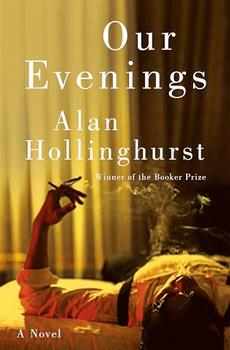Summary | Excerpt | Reviews | Beyond the Book | Readalikes | Genres & Themes | Author Bio

The Everything of Its Two-Thousand-Year History
by Nicholas A. Basbanes
"I can see why people are talking about our going back to the World Series," one of those highly paid Red Sox, J. D. Drew, had told Dan Shaughnessy, the estimable baseball columnist for the Boston Globe, as opening day drew near in April. "On paper, we have that kind of team." It was that blasé comment of presumed inevitability—all of it worked out abstractly on an imaginary notation pad—that gave Shaughnessy reason to pause and comment forebodingly, with uncanny prescience, "But it never plays out the way it does on paper, does it?"
At a meeting in Hanoi in June 2012, American secretary of defense Leon Panetta presented to Vietnamese minister of national defense Phung Quang Thanh a small maroon diary taken from a fallen North Vietnamese soldier by a U.S. Marine in 1966. In return, Thanh turned over to Panetta a passel of personal letters removed from the body of Army sergeant Steve Flaherty of the 101st Airborne Division after he was killed in action in 1969. The Washington Post summed up the arti- fact exchange by noting that these two relics, from a time when the two countries "were bitter enemies," had in an instant become "symbols of the evolving U.S.-Vietnamese relationship"—and each was recorded on otherwise unremarkable sheets of paper
My research model for this book has been fairly straightforward, and should be apparent in each chapter. I traveled in China along the Burma Road, because Old China is where the story begins, and I proceeded in due course to Japan, because that was the only place where I could meet with a Living National Treasure papermaker. I spent seven months trying to get a tour of the National Security Agency, in Fort Meade, Maryland, because the cryptologists there pulp one hundred million ultrasecret documents a year (give or take) and send them off for recycled use as pizza boxes and egg cartons. I spent two days at the Crane Paper mill, in Western Massachusetts, because, as Willie Sutton is purported to have famously said, "that's where the money is"—or, more to the point, that is where all the paper for American currency is made. Since the idea of "disposability" is very much a paper theme, too, the same goes for a Kimberly-Clark mill in Connecticut, where close to a million boxes of Kleenex tissue, and as many rolls of Scott kitchen towels, are made every day. If there's a common thread to be discerned, it is what Graham Greene sagely called, in one of his novels, "the human factor."
A few years ago, the British Association of Paper Historians noted in a description of its activities that there are something on the order of twenty thousand commercial uses of paper in the world today, and that the organization's members are interested in each and every one of them. Rest easy, dear reader: I am not about to explore twenty thou- sand different uses of paper here. But if that claim is accurate—and one Pennsylvania company you will meet in Chapter 17 alone has a line of one thousand different products for its output—then the paper- less society we hear being bandied about so much today may not be as imminent as some people suggest. The words of the great Fats Waller seem especially relevant on this point: "One never knows, do one?"
Excerpted from On Paper by Nicholas A. Basbanes. Copyright © 2013 by Nicholas A. Basbanes. Excerpted by permission of Knopf, a division of Random House LLC. All rights reserved. No part of this excerpt may be reproduced or reprinted without permission in writing from the publisher.




The worst thing about reading new books...
Click Here to find out who said this, as well as discovering other famous literary quotes!
Your guide toexceptional books
BookBrowse seeks out and recommends the best in contemporary fiction and nonfiction—books that not only engage and entertain but also deepen our understanding of ourselves and the world around us.